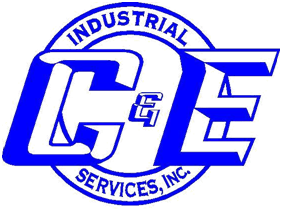 So much of our large machinery, vehicles, airplanes, and vital everyday tools require the process of welding. More than half of all manufactured American products require some form of welding. This incredible fusion of metal components creates a strong bond—unbreakable by even the toughest pressure or conditions—and holds much of our industrial world together. This is why welding is an essential component of many industrial settings as well as vital industries such as aerospace, automotive, and more.
So much of our large machinery, vehicles, airplanes, and vital everyday tools require the process of welding. More than half of all manufactured American products require some form of welding. This incredible fusion of metal components creates a strong bond—unbreakable by even the toughest pressure or conditions—and holds much of our industrial world together. This is why welding is an essential component of many industrial settings as well as vital industries such as aerospace, automotive, and more.
The welding process, of course, is more complex than first meets the eye, as different methods are ideal and necessary for different kinds of jobs. In addition to methods, there is also the implementation of the entire coding system of welding that allows welders and manufacturers to have a common language.
Who Creates the Welding Codes?
There are several working codes used in manufacturing and industrial settings today. The most common uses are those from the American Society of Mechanical Engineers (ASME) Section IX and American Welding Society (AWS) D1.1. These organizations composed of experienced engineers develop these codes with the intent to improve the quality and techniques used in the welding world. One of the differences between the two coding systems is that one addresses fabrication, erection, inspection, and welder qualifications.
Why are Welding Codes Necessary?
The welding codes serve several purposes for welders and industries that require specific types of welding. These codes allow for a uniform approach to welding inquiries, questions, and requirements. It maintains a common language between the industries but also helps with the qualification of welders. Certain jobs or welding contracts often have specific requirements and the coding system allows employers and companies to have a way to gauge knowledge of best practices. For example, API (American Petroleum Institute) is a national trade association that represents a lot of the U.S. oil and natural gas industry. So the industry issues welding codes specific to the type of welding necessary in this context, including pipeline inspections, storage tanks, and pipeline construction.
The welder codes are developed to set the requirements for:
- Testing
- Repair
- Inspection
- Fabrication
- Design specifications
- Welding
Design Specifications
Welding codes can specify some aspects of design. They guide welders and industries into an agreed-upon set of design principles for various contexts and applications. For example:
Fabrication
The specifications for fabrication may vary depending on the type of work being done. It will provide fabrication methods and or workmanship standards. It will provide information on base materials, heat treatment requirements, or other welding fabrication requirements.
Inspection
Regulatory bodies or government agencies will often perform inspections on welding projects involved in infrastructure, manufacturing, oil and gas, and other industries. Welding codes are useful during inspection to ensure that manufacturers understand what aspect of the welding needs improvement.
Post Weld Heat Treatment in the Southwest
Another necessary welding technique is the post-weld heat treatment. Any welding job must be resistant and stand the test of time. This is especially true in essential industries like oil and gas, aerospace, and some manufacturing. The strength of the weld must hold up and guarantee longevity. During the welding process, certain conditions may compromise the strength of the weld. To protect and ensure the material strength of these important welds, post-weld heat treatment is performed.
Some of the post welding treatments include:
- Post heating methods: This is known as hydrogen-induced cracking. This process happens when hydrogen in the environment permeates into the weld during the welding process. When heat is applied to the finished weld, hydrogen is diffused from the welded area. This process needs to happen immediately after the weld is performed because the material needs to be heated to a certain temperature depending on the thickness of the material in question. The thickness will also determine for how long the weld must be held under this temperature.
- Stress-relieving: The welding process itself can create conditions that affect the integrity of the welded material. It can leave residual stresses on the material, which leads to higher chances of stress corrosion and hydrogen-induced cracking.
When is the Post-Weld Heat Process Needed?
Different factors determine whether a weld will require post-weld heat processes treatment. This can depend on the nature of the weld, the alloying system, or whether the material has undergone heat treatment previously. The material will have higher chances of needing a post-weld heat process if there is a higher alloy content or higher carbon content in the material. This process reduces residual stresses and improves material strength.
Find Commercial Code Welding and Post Weld Treatments for your Projects
C&E provides industrial services across the Southwest. Our services include commercial code welding and post-weld treatments for a variety of applications and projects. Ensuring the integrity of a welding job is what we do. Our trained and professional welders apply their training and understanding of codes and requirements to ensure your weld holds the test of time.
Need commercial code welding services? Need post-weld treatments to secure a weld? C&E Industrial has you covered. Call us today and find out more about our welding team and what we do.


